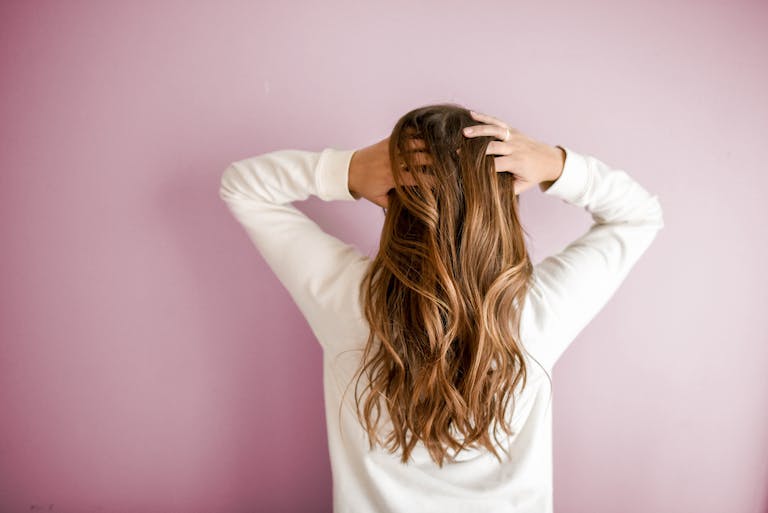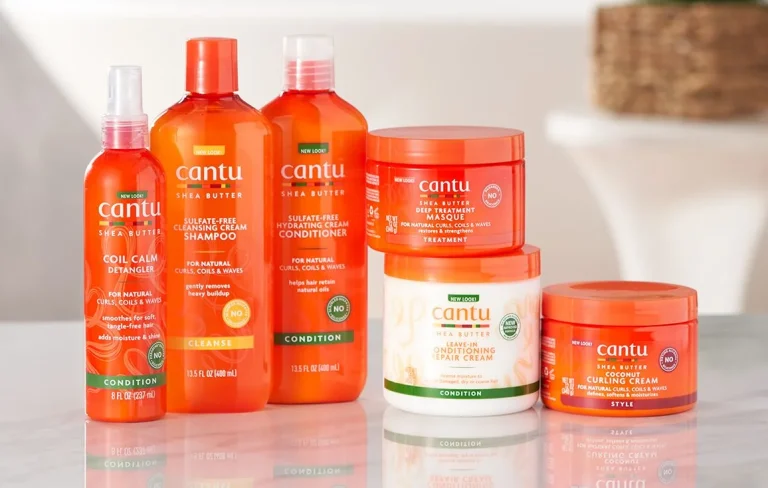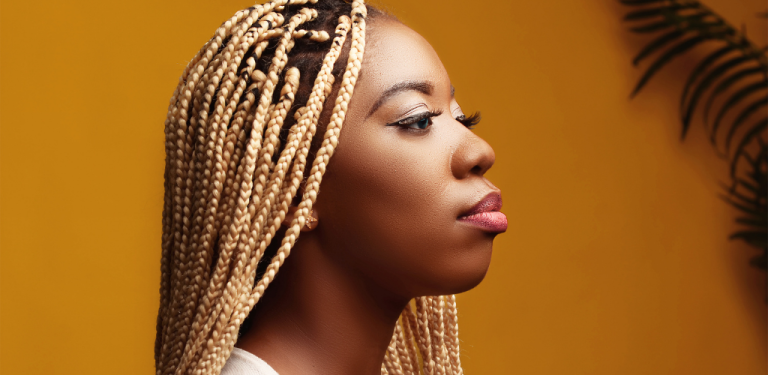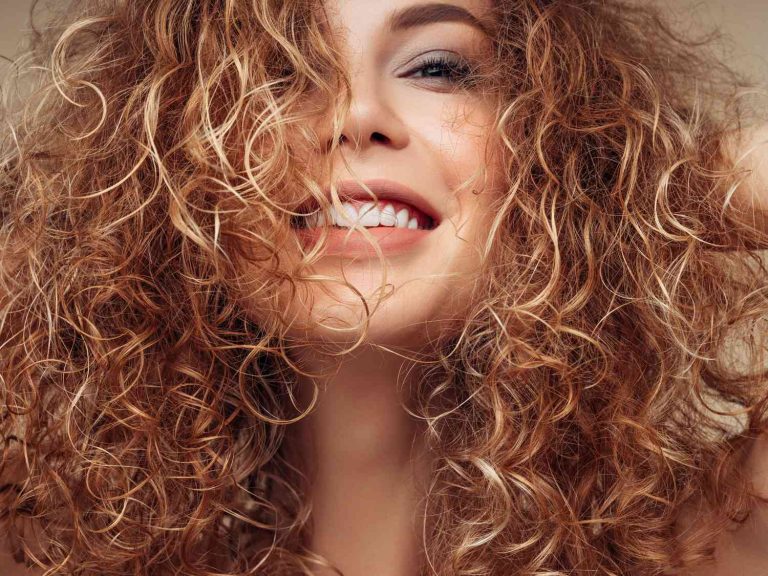The 12 Hair Types: Understanding Hair Type For Proper Care
Every head of hair is unique, with its own texture, curl pattern, volume, and needs. While hair diversity is beautiful, it can also be confusing when it comes to finding the right products and hair care routine. The first step is identifying your specific hair type.
Understanding the 12 main hair types will empower you to give your hair exactly what it needs. Follow along as I break down the characteristics, care tips, and styling tricks for all 12 hair types. With this guide, you’ll be able to embrace the gorgeous hair you were born with.
What Does Hair Type Mean?
Contents
- What Does Hair Type Mean?
- Different Hair Types: The Hair Type Chart
- Type 1: Straight Hair
- Type 2: Wavy Hair
- Type 3: Curly Hair
- Type 4: Coily, Kinky Hair
- What Determines Your Hair Type?
- Can You Change Your Hair Type?
- How To Find Your Hair Type
- How Hair Porosity and Density Affect Natural Hair
- Style and Hair Care by Hair Type
- Conclusion: Embrace The Gorgeous Hair You Have
Your hair type refers to the natural shape and texture of your strands. It is determined by the structure of your hair follicle and can be influenced by genetics, ethnicity, and age.
Hair types are often categorized into these four main groups:
- Type 1: Straight: Hard to curl, less volume, prone to oiliness
- Type 2: Wavy: A mix of straight and curly with a distinct S-shaped wave
- Type 3: Curly: Ringlets, coils and loops with well-defined curls
- Type 4: Coily/Kinky: Very tightly coiled hair with a zig-zag pattern
Within those groups, subgroups like 1A, 2B, and 3C further differentiate the curls and coils. Don’t worry, I’ll explain it all in detail next!
Different Hair Types: The Hair Type Chart
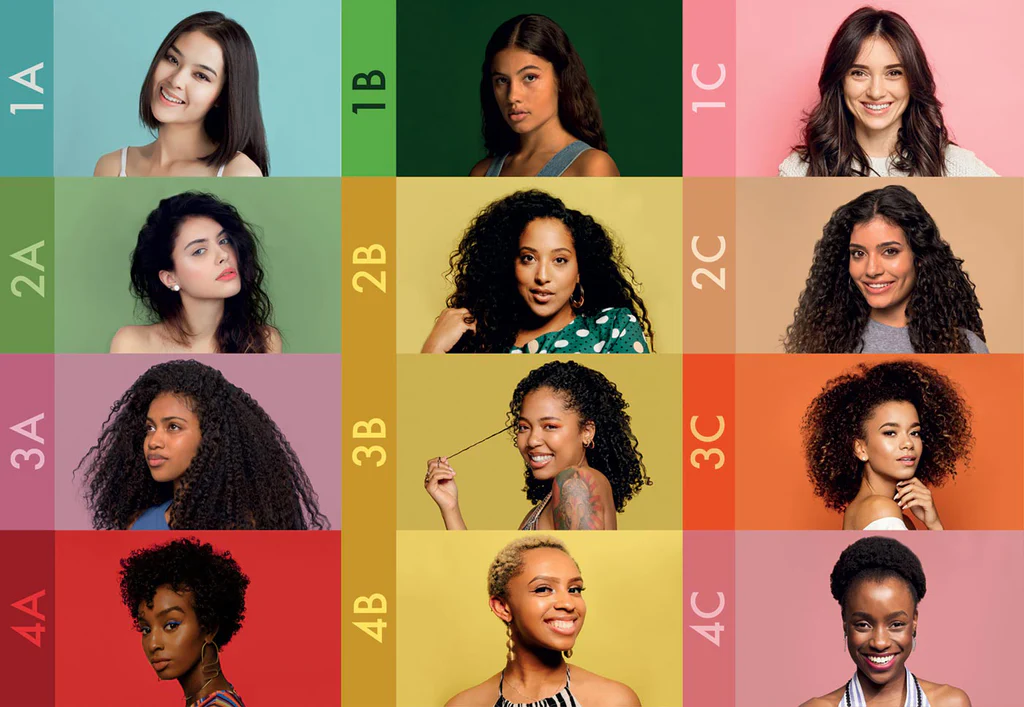
To break it down visually, here is a hair type chart to showcase the range of textures:
Type 1: Straight Hair Types
- 1A: Fine, thin, straight hair
- 1B: Medium-textured straight hair
- 1C: Coarse, thick, straight hair
Type 2: Wavy Hair Types
- 2A: Loose waves
- 2B: Classic lazy S-shaped waves
- 2C: Distinctive, frizzy waves
Type 3: Curly Hair Types
- 3A: Wide, loose curls
- 3B: Ringlets, spirals, coil pattern
- 3C: Tight corkscrew curls
Type 4: Coily, Kinky Hair Types
- 4A: Tightly coiled S curls
- 4B: Z-shaped coils with sharp angles
- 4C: Extremely tight, springy coils
As you can see, the diversity is amazing! Now let’s break down each hair type in more detail.
Type 1: Straight Hair
Straight hair tends to have a smooth, shiny appearance. It can be fine and limp or thick and full. Here’s what you need to know:
- Texture: smooth, not much volume. Can be silky or coarse.
- Greasiness: Straight hair often gets oilier faster.
- Curl: Difficult to hold a curl.
Care tips for fine, straight hair:
- Add volumizing products like mousse or sea salt spray
- Use purple shampoo to maintain shine
- Avoid heavy oils weighing hair down
- Dry shampoo absorbs excess oils
Care tips for thick, straight hair:
- Lightweight products like gels or serums
- Be gentle when combing to avoid breakage
- Layered trims remove bulk while keeping length
- Deep condition to smooth and detangle
Type 2: Wavy Hair
Wavy hair forms a loose “S” pattern and lies somewhere between straight and curly. The subtypes vary quite a bit in appearance:
- 2A: Soft waves begin lower on the strand
- 2B: Classic “beachy” waves, with volume
- 2C: Stronger, distinct waves, prone to frizz
Caring for Type 2A waves:
- Air dry to encourage natural wave pattern
- Sea salt sprays boost texture
- Light leave-in cream controls frizz
Caring for Type 2B waves:
- Allow to air dry or diffuse gently
- Mild shampoos and conditioners
- Anti-frizz serums smooth flyaways
Caring for Type 2C waves:
- Deep condition to control frizz
- Leave-in spray with hold to define waves
- Gel or mousse for definition and shine
- Avoid brushing when dry to minimize frizz
All wavy hair needs lots of moisture to look its best. Settle for nothing less than shampoos and conditioners specially formulated for waves!
Type 3: Curly Hair
Curly hair ranges from loose spirals to tight coils. Proper care is essential to keep these curls strong and healthy.
- 3A: Wide, loose curls
- 3B: Corkscrews and ringlets
- 3C: Tight coils and kinks
Caring for curly hair:
- Hydrating shampoos and masks. Look for moisturizing ingredients like shea butter. Avoid sulfates.
- Fingers detangle gently when wet. Never brush curly hair when it is dry.
- Leave-in conditioners and creams prevent frizz and hydrate.
- Diffuse or air-dry. Let curls set without heat disruption.
- Regular trims remove damage and encourage growth.
- Satin pillowcases reduce overnight frizz.
Embrace those luscious locks! Curly hair is endlessly versatile when properly cared for.
Type 4: Coily, Kinky Hair
Kinky, coily hair features very tight curls and coils with a zig-zag pattern. The strands are densely packed together.
- 4A: Tight “S” curls
- 4B: Coils and waves with sharp angles
- 4C: Extremely tight, springy coils
Caring for coily, kinky hair:
- Moisturize, moisturize, moisturize! Hydrating shampoos, masks, and leave-ins are crucial.
- Protective styles like braids or twists prevent breakage.
- Deep condition weekly with a steam treatment if possible.
- Detangle gently with lots of slip. Use a wide-tooth comb only when wet.
- Protein treatments can strengthen fragile strands.
- Oils and butters like shea or coconut nourish hair.
- Sleep on a silk pillowcase. Cotton creates friction.
Show off those beautiful coils! When cared for properly, type 4 hair is strong, flexible, and full of personality.
What Determines Your Hair Type?
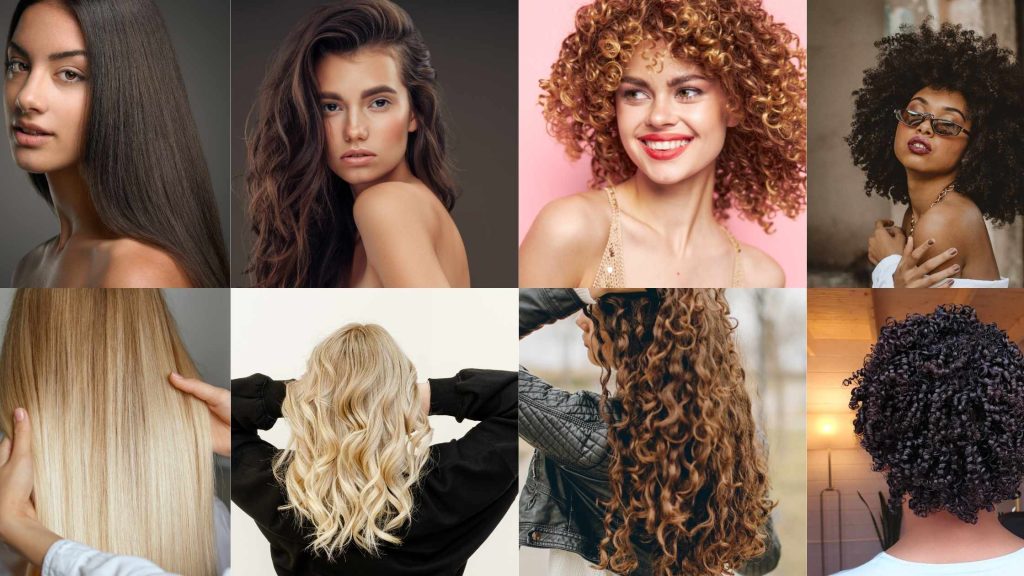
What ultimately shapes your hair type? Here are the key factors:
- Ethnicity has a huge influence. Those of African descent tend to have very coily hair. Asian hair is typically straight.
- The shape of your follicles determines if your hair grows straight or curly. Curly follicles hook together.
- Genetics plays a role in texture, curl pattern, volume, and density.
- Age can change hair over time. Children’s hair is typically finer.
While you can’t overhaul your genetics, you can work with your hair type to make it shine.
Can You Change Your Hair Type?
This is a frequent question, and the answer is yes and no.
You cannot fully alter the genetic hair type you were born with. The follicle shape and curl pattern are fixed.
However, you can temporarily change the appearance of your hair with:
- Hot tools like flat irons and curling wands
- Chemical treatments like perms, relaxers, and keratin
- Styling products like gels, mousse, and serums
Permanent straightening or curling treatments do carry risks of damage, though. Embrace your hair for what it is!
How To Find Your Hair Type
Not sure what hair type you have? No problem! Just follow these simple steps:
- Wash and condition to remove any products. Hair should be squeaky clean.
- Let air dry completely without any styling.
- Examine the pattern of hair strands. Straight, wavy, curly, or coily?
- Note width of coils and curls. The curl diameter indicates numbered subtype like 2B or 3C.
- Check thickness and volume. Fine, medium or thick hair?
- Consider shine level, frizz factor and curl longevity throughout the day.
- Determine porosity. Does hair absorb water quickly and easily when wet?
Identifying your hair type takes a keen eye – but it provides so much useful guidance for care and styling!
How Hair Porosity and Density Affect Natural Hair
Beyond curl pattern, these two factors have a big impact:
Porosity refers to how well your hair absorbs and retains moisture.
- Low porosity: Cuticles are tightly sealed. Hair resists moisture and is difficult to penetrate.
- High porosity: Cuticles have gaps that allow moisture in and out. Hair absorbs products easily.
Density describes the number of individual hairs on your head.
- Low density: You have fewer individual strands. Hair appears thinner.
- High density: You have many hairs on your head. Hair seems thicker.
Knowing your porosity and density helps customize products and care. For example, low porosity hair benefits from weekly deep conditioning to add moisture. High density hair can use lighter products to avoid greasy buildup.
Style and Hair Care by Hair Type
Now for the fun part – hair care and styling tips tailored to each type!
Tips for Type 1: Straight Hair
Washing: 1-2 times per week max. Overwashing causes oil overproduction.
Products: Light, oil-free styling creams, mousse, sea salt spray.
Styling: Create body and volume with round brushes and blow dryer.
Care: Monitor oiliness. Use clarifying shampoo 1-2 monthly.
Tips for Type 2: Wavy Hair
Washing: 2-3 times per week. Alternate moisture & clarifying shampoos.
Products: Anti-frizz serum, leave-in conditioner, curl cream, mousse.
Styling: Diffuse gently on low heat or air dry. Limit heat tools.
Care: Hydrating masks twice monthly. Avoid over-drying.
Tips for Type 3: Curly Hair
Washing: 1-2 times per week. Co-wash for extra moisture.
Products: Cleansing conditioner, leave-in cream, gel for hold.
Styling: Finger coil curls. Air or diffuse dry.
Care: Satin pillowcase. Trim regularly. Deep condition weekly.
Tips for Type 4: Coily, Kinky Hair
Washing: 1 time per week max. Focus on moisture.
Products: Hydrating shampoo, nourishing masks and styling creams.
Styling: Define coils with curl cream. Air dry.
Care: Protective styles. Silk pillowcase. Protein treatments.
Conclusion: Embrace The Gorgeous Hair You Have
Hair types don’t exist to stress you out. They are a guide to embrace the unique head of hair you were born with.
Now that you know your hair’s true texture and needs, you can customize a hair care regimen that brings out its best.
The diversity of hair is something to be celebrated. Whether you have pin-straight locks or tight spirals, your hair is beautiful. Nurture it with the right products, techniques, and tons of love.
I hope this guide gave you a helpful education on the 12 hair types. Our hair is part of what makes us who we are. Get to know your strands, and they’ll reward you in kind!

Founded by Sophia Rodriguez, IGXO Cosmetics is a PETA-certified, cruelty-free, and vegan makeup brand.
